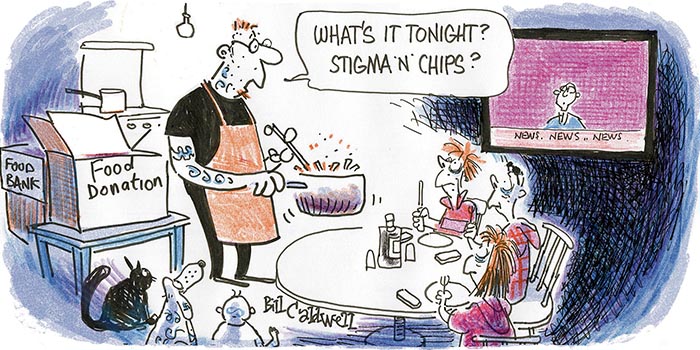Post by HLTD50 student Zainab
Throughout his book The Wounded Storyteller, sociologist Arthur Frank does many comparisons of the various types of illness narratives. As a result, while I was reading the novel Scarborough by Catherine Hernandez, I couldn’t help but identify some of the illness narratives present in this novel. Besides the story line itself (which involves events relating to health, illness, disability, and health access in the Scarborough region of Toronto), I also noticed some subtle details in the writing that characterize illness narratives. Some of the narratives that stood out to me the most were Bing’s restitution narrative, Marie’s quest narrative and Cory’s chaos narrative.
Frank describes a restitution narrative in terms of the desire for an ill person to heal completely and go back to “normal”. I think that to an extent this narrative type resonates with Bing because he has a forward-looking journey where he is able to achieve his goals: similar to how a patient might wish to fully recover from an illness. From the very beginning I noticed that Bing might have been predisposed to being a hero, as Hernandez diligently expresses how supportive Bing’s mother is towards his intellectual abilities as well as his fluid gender identity. Despite the challenges he faces (like the bullying on the bus and his anxiety right before his variety show performance), he is able to conquer them based on the simple notion that “I am loved. I will be loved. I am perfect just the way I am.” (Hernandez, pg. 64). Thus, Bing’s journey resembles a restitution narrative as he is able to express himself exactly as he wants to and live a normal life as a result of overcoming significant barriers.
By contrast, Marie’s journey was not discussed in depth in the novel from her own point of view. Instead, insights into her character (as well as her son, Johnny, and husband/Johnny and Sylvie’s dad) tended to come from Sylvie’s perspective. However, towards the end I was able to see the struggle that Marie faces in terms of understanding her son who has different developmental needs (Johnny likely has some form of autism). As Frank describes, quest narratives express how a person changes as a result of their illness; in other words, illness becomes something to live with rather than overcome. Marie embarks on a journey to understand her son’s needs, faces multiple barriers and, as a result, she changes. On page 228 Marie describes how she has acknowledged that her idea that being different is bad is inaccurate; thus, she has already come to accept Johnny’s condition and strives to normalize her son’s experience, bringing him to the community literacy center where he is exposed to other children. In addition to this, she confronts a group of women, something she would usually not do, for the sake of protecting Johnny from their judgment. Marie’s quest comes to an end when she finally manages to teach Johnny, who is non-verbal, a way to interact with her. Therefore, in her quest she is challenged by many barriers such as poverty and accessibility; but she manages to find a way around them and work on normalizing her son’s condition both for her self and the rest of the community.
*
Frank claims that chaos narratives tend to be the hardest to read because nobody wants to hear about how bad someone’s illness can get–or in the case of Scarborough, how bad a person’s situation can become. Hernandez presents Cory as a constantly failing character who [SPOILER] eventually ends up dying in a house fire. In the beginning I thought maybe the presence of his daughter Laura might bring about change and his journey would become a quest narrative. As a reader, I’ve come to the decision that Cory did love Laura, that he wanted to be there for her, and on many occasions he was trying his best–but his past life involving white supremacy and gang-related violence had shaped him in way that did not allow for much growth. For example, despite Ms. Hina’s good intention and her obvious bond with Laura, due to Cory’s discriminative behavior he was not able to reap the benefits of the support she was providing his daughter. Starting on page 118 and up to page 121 Hernandez uses some of the structural details that Frank describes as characteristic to chaos narratives. In the scene where Laura is making a snowman sign, Cory starts very positively and supportive of his daughter’s crafting, but as listening to a song brings him back into his past, he starts to snap at Laura. He tries to bounce back but everything falls apart: the CD player stops playing, the glue is everywhere, and dinner is burnt. Thus, the and then, and then structure and the lack of control common in chaos narratives is evident in this scene. Eventually Cory’s character is killed which reflects the worst way of how chaos narratives can come to end.
In conclusion, Scarborough gives readers a very relatable depiction of illness narratives. In my opinion, Frank’s The Wounded Storyteller provides excellent descriptions of the various types of illness narratives. However, applying them to Hernandez’s novel has really helped me take my knowledge of illness narratives and make them more affective in my daily life.
